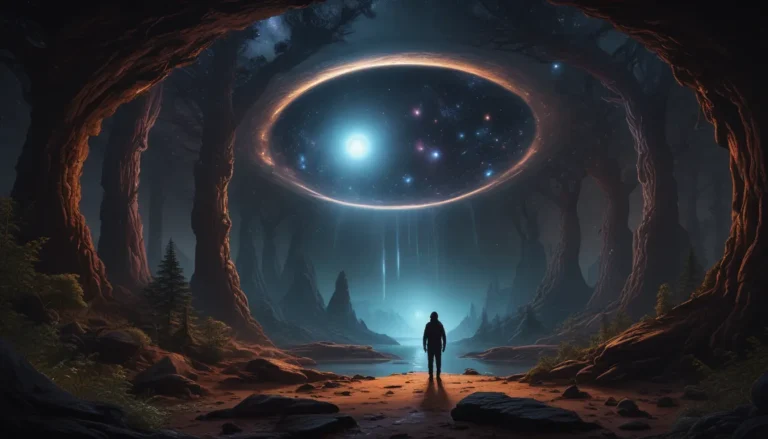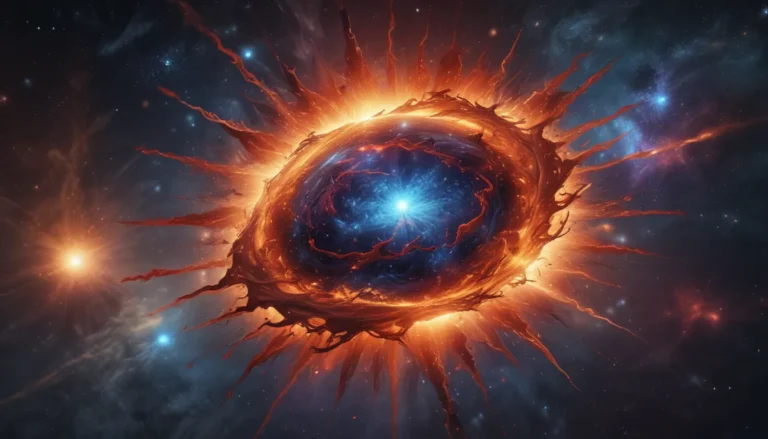The pictures we use in our articles might not show exactly what the words say. We choose these pictures to make you interested in reading more. The pictures work together with the words but don’t take their place. The words still tell you the important facts.
Star formation feedback is a captivating process that plays a vital role in the creation and evolution of stars within the universe. This intricate interplay between stars and their cosmic surroundings shapes galaxies, influences the birth and death of stars, and contributes to the vast cosmic tapestry that surrounds us. In this article, we will delve into the fascinating world of star formation feedback, uncovering 15 surprising facts that shed light on this phenomenon. From the impact of stellar winds and radiation pressure to the role of supernovae and cosmic rays, prepare to be amazed by the wonders of star formation feedback!
Unveiling the Mysteries of Star Formation Feedback
-
Star Formation Feedback and Galactic Evolution:
When new stars form within a galaxy, they release immense amounts of energy in the form of radiation and stellar winds. This feedback process influences the surrounding gas and dust, impacting the rate of future star formation and shaping the overall structure of the galaxy. -
The Catalyst for Star Birth:
The intense radiation and stellar winds from young, massive stars can compress nearby gas clouds, triggering their collapse and the formation of new stars. This feedback mechanism acts as a catalyst for the continuous cycle of star birth and death within galaxies. -
Regulating Star Formation with Supernovae:
Supernova explosions, resulting from the death of massive stars, release shockwaves that disrupt nearby gas clouds. This disruption can regulate the rate of star formation in a galaxy by preventing further star formation or dispersing gas. -
Fueling Supermassive Black Holes:
Star formation feedback provides fuel for supermassive black holes at the centers of galaxies. The energetic outflows from growing black holes interact with surrounding gas, influencing new star formation processes.
The Impact of Star Formation Feedback on Galaxies
-
Starburst Galaxies and Intense Feedback:
Starburst galaxies, which experience high rates of star formation, showcase the intense feedback from newly-formed stars that shapes their structures and fosters further star formation. -
Driving Galactic Winds:
Powerful radiation and stellar winds from massive stars can create galactic winds, blowing gas and dust out of galaxies. These winds play a crucial role in redistributing material within galaxies and regulating star formation rates. -
Influencing Galactic Evolution:
Feedback processes control the availability of gas for future star formation, significantly impacting the long-term evolution of galaxies. This feedback helps shape the characteristic sizes, shapes, and populations of galaxies we observe in the Universe.
Studying Star Formation Feedback: Observations and Techniques
-
Interdisciplinary Approach to Observations:
Astronomers use simulations, telescopic observations, and multi-wavelength data to study the effects of star formation feedback. This integrated approach provides a comprehensive understanding of the processes at play. -
Maintaining Balance in Galaxies:
Star formation feedback regulates the rate of star formation, preventing galaxies from depleting their gas reservoirs too quickly. This balance between star formation and gas consumption is crucial for galactic evolution. -
Complexity of Feedback Mechanisms:
Feedback processes involve various mechanisms such as radiation pressure, supernova explosions, stellar winds, and interactions with supermassive black holes. These complex interactions shape the evolution of galaxies.
Expanding Horizons: The Ongoing Study of Star Formation Feedback
-
Galactic Environments and Observational Techniques:
Scientists continue to refine our understanding of star formation feedback by studying various galactic environments and utilizing advanced observational techniques. This ongoing exploration deepens our knowledge of this fundamental process. -
Sculpting Galactic Structures:
Energy released during star formation feedback can drive the expansion of gas cavities within galaxies, shaping structures like superbubbles or chimneys that regulate star formation activity. -
Impact on Galactic Outskirts:
Star formation feedback extends beyond the central regions of galaxies, influencing the outskirts where different physical conditions exist. This feedback process impacts the growth and evolution of galaxies as a whole.
Unlocking the Mysteries of the Universe Through Star Formation Feedback
In conclusion, star formation feedback is a fascinating and complex process that shapes the universe in profound ways. The interplay between newly formed stars and their cosmic environment influences galactic evolution, the formation of planetary systems, and the distribution of matter throughout the cosmos. By studying these processes in detail, scientists gain insights into the birth and evolution of stars, the formation of galaxies, and the dynamics of the universe.
As our exploration of star formation feedback continues, we uncover new surprises and revelations that deepen our understanding of the cosmos and our place within it. The ongoing journey of discovery leads us to appreciate the beauty and complexity of star formation feedback, offering a glimpse into the intricate workings of the universe. Join us in unraveling the mysteries of space and expanding our knowledge of the cosmos through the captivating world of star formation feedback.
FAQs: Navigating the Universe with Star Formation Feedback
Q: What is star formation feedback?
A: Star formation feedback refers to the processes through which newly formed stars influence their surrounding environment with energy and mass-loss.
Q: How does star formation feedback occur?
A: Star formation feedback occurs through mechanisms such as stellar winds, radiation pressure, supernova explosions, and bipolar outflows that inject energy and momentum into the interstellar medium.
Q: What role does star formation feedback play in the evolution of galaxies?
A: Star formation feedback is crucial in regulating the growth and evolution of galaxies, driving outflows of gas and dust, regulating star formation rates, and shaping galactic structures.
Q: How does star formation feedback impact the formation of planetary systems?
A: Star formation feedback shapes the environment for the formation of planetary systems by clearing out debris, triggering the collapse of nearby molecular clouds, and facilitating the creation of protoplanetary disks.
Q: What are some surprising facts about star formation feedback?
A: Surprising facts include the discovery of powerful jets and outflows from young stars, the significant impact of feedback on the interstellar medium, and the intricate interplay between stars and their galactic environment.
Embark on a journey through the cosmos, exploring the wonders of star formation feedback and unraveling the mysteries of the universe. Dive deep into the captivating world of stellar interactions, galactic evolution, and the cosmic dance of stars. Join us in our quest to understand the fundamental processes that shape the universe and illuminate the beauty and complexity of the cosmos.
This revised article focuses on the fascinating aspects of star formation feedback, shedding light on its role in shaping the universe. By presenting the information in an engaging and informative manner, readers can explore the wonders of this phenomenon and deepen their understanding of the cosmic tapestry that surrounds us.






